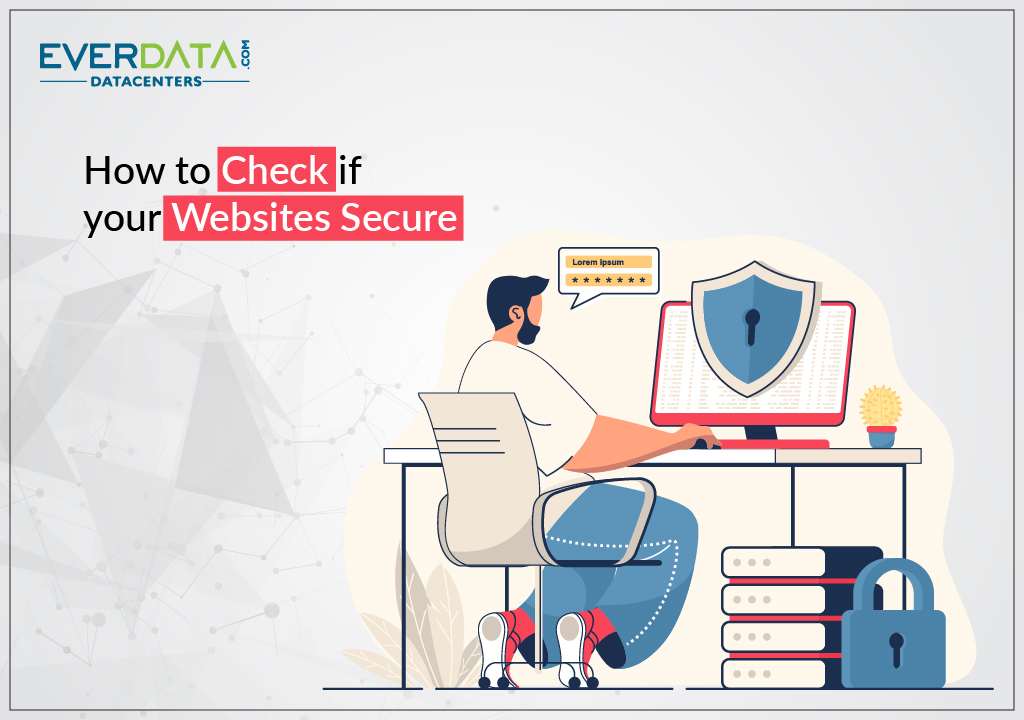
Submitted by admin on

A closed padlock next to the URL indicates that a website is secure whenever you access it. Although some individuals believe that because online retailers require the entry of personal information and credit card information, they are the only places where it is necessary, this is untrue.
Since 2018, search engines like Google have started considering Website Security when determining rankings. Because of this, your website needs to obtain a security certificate to increase the likelihood that it will show up among the top results.
Important Points that Help you to Check Whether the Website is Secure Or Not
Assess the Website Using Security Tools
I assume you have antivirus software installed on your PC. The majority of digital security firms create tools that inform users when a website is secure. These tools occasionally stop navigation when there is no security certificate present at the address or when it has expired.
Other businesses give Internet users the option to review a site before deciding whether or not to keep browsing. Similar to browser plugins, these tools are typically installed automatically with the antivirus. Additionally, you may find a lot of VPN providers and pen-testing tools beneficial. Investigate the online reputation of the company before selecting an antivirus. There is a website called VirusTotal that is intriguing. By pasting a URL into the address search bar, it runs an analysis and determines whether or not the site poses hazards to users.
Google Safe Browsing is a tool that is comparable to the one mentioned above. It has the advantage of using Google's database, which produces an examination of billions of pages and increases the likelihood of discovering dangerous websites or efforts to steal information from these domains.
Search the Site for Warning Signs
If a dupe or scam website's author didn't thoroughly review the site before releasing it (which they frequently don't), it would be simple to see the holes and detect the fraud. First, make sure there are no spelling mistakes. Spelling errors on well-established websites are possible, but they are quite uncommon, especially in larger organizations. Second, look into the costs of the goods or services being provided. Many shady websites offer extremely low costs that are typically unreal.
In addition to these important warning signs, other things could point to a dangerous website. A hurriedly created scam website can also be identified by its low-quality graphics, shoddy page design, and slow loading times. When you have doubts about the legitimacy of a website, keep an eye out for these indicators.
Verify the Domain Age of the Site
The founding date of a website is indicated by the domain age of the website. As domains are frequently purchased before the development of a website, this domain age cannot provide a precise website age, but it can provide you with a general notion.
This is especially useful when you think you're on a reputable website but you have a sneaking suspicion that it's a fake. For instance, if you believe you are on Walmart's genuine website yet the domain age is only a few months, weeks, or days, the site is probably a copycat intended to defraud people of their credit card information or other sensitive information.
You can use a variety of websites, such as Small SEO Tools and Duplichecker, to determine the age of a domain.
Verify the SSL Certificate
A safe URL always starts with "HTTPS" rather than "HTTP" at the beginning. The additional "S" in "HTTPS" stands for "secure," indicating that the website is protected by an SSL certificate. All information sent from the browser to the website's server is protected by the SSL certificate. Right now, if you look at the address bar of your browser, you will notice that our blog's address is preceded by a small padlock.
Depending on your browser, when you click it, a message claiming "the connection to this site is safe" will show. What does that signify, though? Thus, a corporation is ensuring that no communication between you and the organization in charge of the website can be intercepted or altered.
Consider visiting a buying website and informing the business of your personal information. Without SSL certification, this data could be duplicated without your knowledge or that of the store. Consequently, confirming that a website has that certification is the first step in determining whether it is secure. When ranking the websites in its list of search results, Google already takes such security measures into account.
Therefore, if you're wondering how to make your WordPress site appear on Google, be aware that one of the requirements is obtaining a security certificate.
Be Cautious With Security Seals
Sites with security seals are certified by numerous businesses. But it is simple to make a phony stamp with editing software and add it to the pages. The best course of action is to click on the seal to verify its legitimacy and see whether it takes you to the website of the business that issued it or provides any additional information. Images of fake stamps lack all of that information. Additionally, you should conduct a Google search for the badge to confirm the validity of the certification. On e-commerce pages, this is crucial.


Add new comment